10 Things You Didn't Know About Living in a Tiny Home
It's a lazy weekend and you’re plunked down on the couch channel surfing.
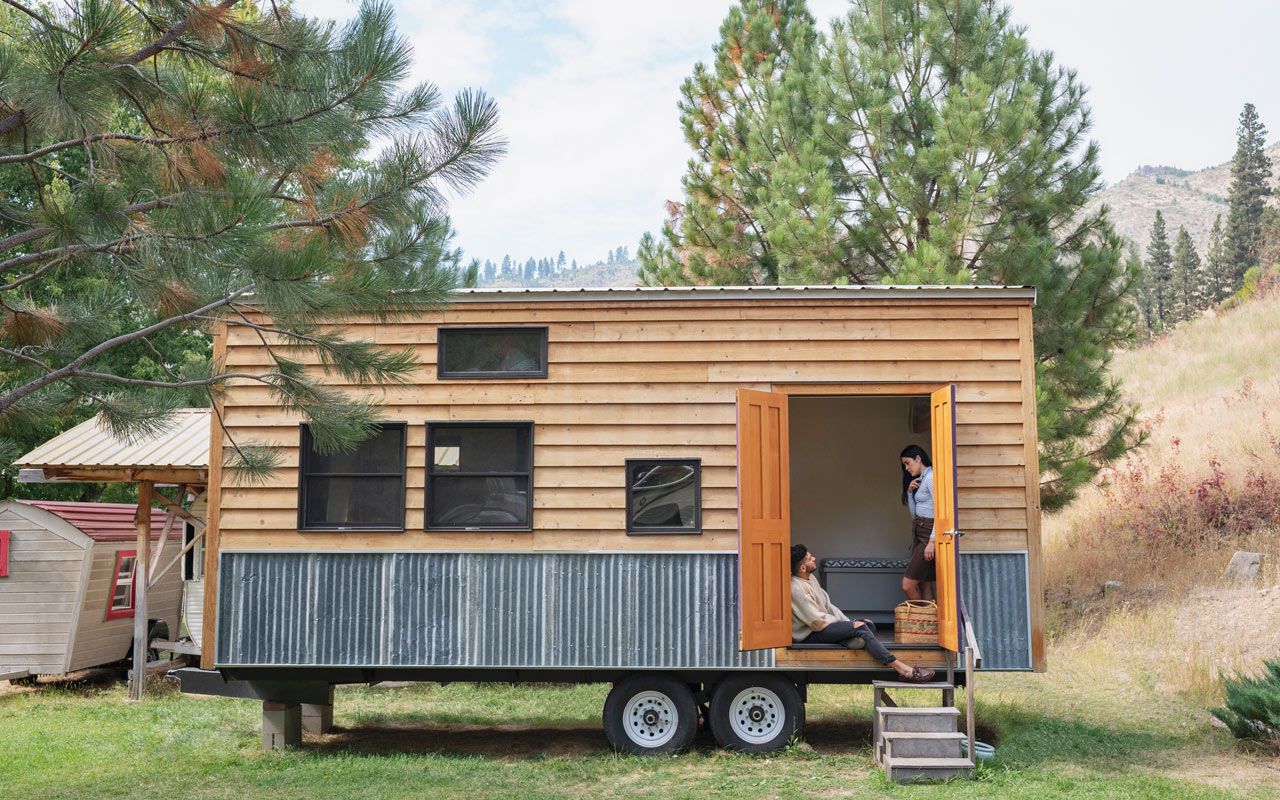

It's a lazy weekend and you’re plunked down on the couch channel surfing. Before you know it, you've gotten caught up in a "Tiny House Hunters" marathon on HGTV. Several hours later, you're seriously considering downsizing your entire life to fit into 400 square feet or less, because you're now an expert on tiny home living, right? Not so fast. Those reality TV shows only provide a heavily edited snapshot of what it's like to house hunt for and live in such a small abode.
We talked with several seasoned tiny homeowners and industry experts to find some of the little-known things novice buyers don’t realize until after they've signed on the dotted line. Here's what they had to say about the realities of tiny home living.

A Tiny Home Costs More Than You Think
Don't believe the hype the next time you read a glossy home magazine or see a reality TV show featuring a tiny home buyer who purchased their dwelling for under $10,000. That too-good-to-be-true price tag usually never includes the cost of labor, says Randy Woodman, a sales manager for Tiny Innovations, a Portland, Ore.-based tiny home builder.
What's also not mentioned is that "[those homes] are almost always constructed with donated or found materials," he says. The true cost -- including all labor and materials -- for a professionally built tiny home that sits on a trailer and has been inspected for quality usually starts around $40,000 for a 20-foot structure, Woodman notes.
Keep in mind that once you start adding high-end finishes, such as quartz countertops and bamboo floors, as well as top of line appliances (think: an energy-efficient washer/dryer combo) to the design plan, that final amount will increase.
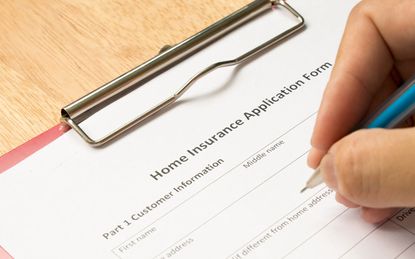
Getting Homeowners Insurance Is Tricky
Since a tiny home isn't a typical housing structure, you'll need to seek out a tiny house-specific homeowners insurance policy. Having such a policy helps protect the house and its belongings from a destructive event, as well as theft. Stationary tiny homes, which are permanently attached to a foundation on a plot of land, are typically viewed by insurance companies as being comparable to traditional single-family homes. That makes it easier for them to get approved for coverage.
Homeowners who live in movable tiny homes that sit on a mobile trailer may face a bigger challenge. If your tiny home on wheels is registered as a certified RV, you can get a recreational vehicle insurance policy, which is similar to an automotive policy, according to TinyHouseBuild.com, an online resource for the tiny home community. Coverage includes collision, content protection and liability. The caveat with this type of policy is that many insurers exclude anyone living in the dwelling full time, the site notes. Also, RV insurance typically only covers certified RVs constructed by a manufacturer approved by the Recreational Vehicle Industry Association (RVIA).
If your movable tiny home isn't registered as a certified RV, once you find a willing insurer, you'll need to get creative with the type of policy you're able to obtain. For example, inland marine insurance policies have been used to cover tiny homes on wheels, but such policies don't come with liability coverage, according to TinyHouseBuild.com. Some tiny homeowners even use renter's insurance, which provides liability coverage, covers personal belongings in the event of theft, as well as living expenses for a short period if the home becomes inhabitable. However, the structure itself isn't covered under this type of policy, the site states.
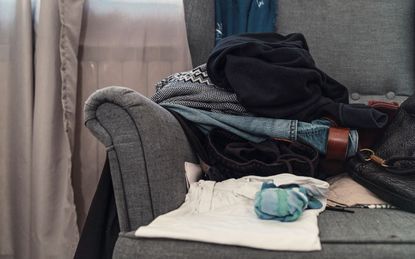
Tidying Up Is a Constant Chore
Having less house doesn’t necessarily mean you'll have less housework. Rather, you may find that dirt and clutter accumulate more quickly in such a small space, forcing you to clean more often, suggests Jenna Spesard, a Los Angeles-based tiny homeowner and travel blogger at TinyHouseGiantJourney.com. “Although it only takes a few minutes, I seem to be constantly cleaning in order to keep it tidy. It's a never-ending cycle,” she says. Kahla McRoberts, a Durango, Colo.-based tiny homeowner and blogger at ToLiveTiny.com, mentions that she has to clean her floor and carpet daily -- sometimes twice a day -- because it’s obvious when they’re dirty.
To prevent becoming overwhelmed by clutter, keeping your tiny home organized at all times is key, McRoberts notes. Forgetting to fold a huge pile of laundry immediately after taking it out of the dryer or leaving dishes stacked in the kitchen sink can wreak havoc on an already limited living space. Investing in storage containers that easily fit into a closet or slide underneath a table or bed can help keep things tidy without adding to the mess.

Shopping Sprees Are a Thing of the Past
At less than 400 square feet, a typical tiny home doesn't leave much room for storage. If you have a shopping habit, you'll need to get it under control fast. When you become a tiny home owner, trips to the store must be planned in advance to prevent over-buying. Even something as simple as purchasing groceries requires taking inventory of the food and household items you already have on hand and meal-planning ahead of time, notes TinyHouseGiantJourney.com's Spesard. "If I accidentally bought a gallon of milk when there was already one waiting for me at home, it would be a disaster," she says.
Kerri Fivecoat-Campbell, a longtime tiny homeowner based in Arkansas and author of Living Large in Our Little House, says that she and her husband adhere to the "one in, one out" philosophy to help combat over-buying, which can quickly lead to clutter. "We can't just buy something because we want it. There's no room to keep adding . . . If we bring in something else, it must have more function and we must love it more than what we need to donate."
QUIZ: How Smart of a Home Buyer Are You?
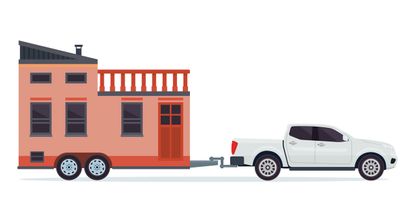
Traveling With a Tiny Home Is Costly
Sure, the flexibility of living in a movable tiny home is enticing. You can pack up and relocate to a new city at a moment's notice, or take a road trip without having to worry about lodging. However, travel-related expenses can add up fast depending on how much you're on the road, warns TinyHouseGiantJourney.com's Spesard.
Spesard, who traveled 25,000 miles during her first year of tiny homeownership, quickly found that related costs were taking a huge chunk out of her monthly budget. "With the amount of miles I was going, I was getting about nine miles per gallon [in gas on her Ford F250 used to transport her home]," she recalls. "I was spending about $700 per month on gas. Then I had to pay for campsites [to park overnight or for extended periods] and car maintenance.” Now, Spesard says she no longer travels with her tiny home and her lifestyle has become more affordable as a result.
If you have a tiny home that's movable and prefer to travel for leisure, consider venturing to a destination where you have family and friends nearby. That way you can camp out for a night or two with permission in their driveway or backyard free of charge.
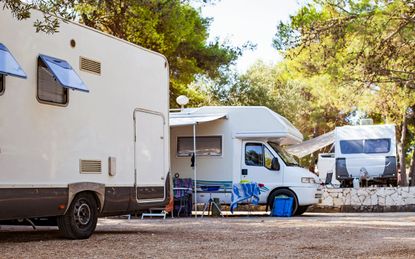
Long-Term Parking Options Are Limited
Unless you own a plot of land, you'll need a place to legally park a movable tiny home; you can't just park it anywhere, says Tiny Innovations' Woodman. Many states have zoning laws in place that heavily restrict where you can park such a dwelling and for how long. And if you're interested in buying a stationary tiny home, it's illegal in some states to live in such a structure if the square footage doesn’t meet the required minimum, according to Realtor.com.
If you have a tiny home on wheels and it's registered as a recreational vehicle, you can legally park it at an RV campground for a fee. Depending on the length of your stay, you'll either be charged a daily, weekly or monthly rate, which includes utility and sewer hookups. For example, at Cherry Hill Park, an RV park in College Park, Md., prices range from $77 to $98 per night. At Archway RV Park in Mt. Vernon, Ill., the daily rate is $38 and the weekly fee ranges from $150 to $175. In Portland, Ore., movable tiny-home dwellers can park at Columbia River RV Park on a daily ($40-$45), weekly ($240-$280) or monthly basis ($400-$595). Some campgrounds offer additional amenities including access to WiFi, a laundromat, swimming pool and picnic areas.
Keep in mind that some RV parks have restrictions including age requirements (for example, retirement-focused campgrounds targeting guests 55 and over), limits on the length of stay or no-pets policies.

Entertaining Is a Challenge
If you enjoy hosting dinner parties or summertime barbeques with family and friends, get ready to pare down that invite list significantly once you move into a tiny home. Less living space means less room to entertain guests, ToLiveTiny.com's McRoberts reminds would-be buyers. For example, instead of having 10 friends over for wine and cheese on a Saturday night, you may only be able to comfortably accommodate four to six people.
McRoberts, who currently lives in a 220-square-foot tiny home that sits on a trailer, says she'd like to one day move it to her own plot of land where she'd create a large outdoor space that allows for entertaining more guests. It would also provide room for her dog to run around.
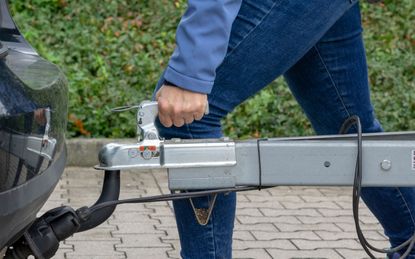
Your Tiny Home Might Get Stolen
Believe or not, theft is an ongoing issue in the tiny home community for those that own movable dwellings. Thieves can literally pull up to an unoccupied home, hitch it to a truck and drive off with all the owner’s possessions in tow never to be seen again. In many of these incidents, the home was situated in plain sight of a road, which can attract unwanted attention from curious passersby and thieves, according to TheTinyLife.com, an online resource for the tiny home community. With that in mind, the site recommends situating your tiny home in a place that's hidden from heavily trafficked areas, perhaps by shrubbery or trees. While doing this doesn't guarantee your home won't be stolen, it can help lessen the chance that someone with ill intentions will spot it, the site notes.
There are a few other tactics tiny homeowners can employ to help combat theft. Tumbleweed Tiny House Company, a Colorado Springs, Colo.-based tiny home builder, recommends doing the following:
- Use a hitchlock to help stop a potential thief from unhitching your tiny home from your vehicle.
- Block the trailer wheels by piling bricks or cinder blocks in front of each wheel in conjunction with using a wheel lock on at least one wheel to prevent the trailer from moving forward or backward.
- Chain your trailer using a heavy-duty chain to a tree or other permanent structure.

Good Luck Selling Your Second-Hand Tiny Home
A tiny home can be ideal if you’re single or sharing it with a partner. But add a child (or even a pet or two) to the mix and your cozy household will get really crowded really fast -- a big reason why some people would never live in a tiny home in the first place. So if you find yourself in a position that you need to sell your tiny home to afford the down payment on a larger, traditional house, you’ll need patience and luck. While the tiny home market is growing, it’s a sliver of the overall housing market. According to the National Association of Realtors, just 1% of the homes sold in the U.S. in 2017 were under 1,000 square feet.
Adding to the challenge, most tiny homes were customized to fit the original owner’s specifications. This can significantly shrink the already small pool of potential buyers and “make it difficult to recoup the cost of materials and labor,” says Ryan Mitchell, blogger and owner of TheTinyLife.com, an online resource for tiny homeowners. For example, a retiree may want a single level tiny house without stairs or a sleep loft ladder to climb. A younger buyer may prefer a sleeping loft that requires climbing a ladder to access, because it allows for more living space to entertain on the lower level.
If you must sell your tiny home, be sure to emphasize its space- and money-saving features in the listing, advises Judy Dutton, deputy editor for Realtor.com. This includes low monthly utility bills and built-in furniture such as a Murphy bed. If you live in a stationary tiny home that has yard space for entertaining, you’ll want to mention that and include high-resolution photos with the listing.
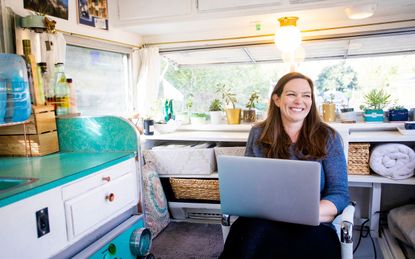
Tiny Home Living Can Pay Off Financially
While there are some things that can be frustrating about tiny home living, there are other aspects that make it worthwhile to the bottom lines of owners. Top of the list: Nearly 70% of tiny home dwellers don't have a mortgage compared to just 30% of traditional home owners, according to a survey conducted by TheTinyLife.com.
The potential financial upsides don't end there. TheTinyLife.com's Mitchell says since becoming a tiny homeowner, he's been able to travel the world, pay off his student loan debt much earlier than expected and only works about 10 hours per week to cover his living expenses. He's even able to stash away some cash each month -- and those savings can quickly add up. That same survey found that 55% of tiny homeowners have more savings than the average homeowner, with a median amount of about $11,000 in the bank.
Get Kiplinger Today newsletter — free
Profit and prosper with the best of Kiplinger's advice on investing, taxes, retirement, personal finance and much more. Delivered daily. Enter your email in the box and click Sign Me Up.

Browne Taylor joined Kiplinger in 2011 and was a channel editor for Kiplinger.com covering living and family finance topics. She previously worked at the Washington Post as a Web producer in the Style section and prior to that covered the Jobs, Cars and Real Estate sections. She earned a BA in journalism from Howard University in Washington, D.C. She is Director of Member Services, at the National Association of Home Builders.
-
 Stock Market Today: Dow Rises 854 Points From Its Intraday Low
Stock Market Today: Dow Rises 854 Points From Its Intraday LowIf there's one thing markets hate, it's uncertainty. But uncertainty is all they're getting these days.
By David Dittman Published
-
 Are You a Retirement Millionaire Too Scared To Spend?
Are You a Retirement Millionaire Too Scared To Spend?If you are too scared to spend money in retirement, you may be saddled with regret. Here are three ways to safely enjoy your sizable retirement nest egg.
By Donna Fuscaldo Published
-
 What Does Medicare Not Cover? Eight Things You Should Know
What Does Medicare Not Cover? Eight Things You Should KnowHealthy Living on a Budget Medicare Part A and Part B leave gaps in your healthcare coverage. But Medicare Advantage has problems, too.
By Donna LeValley Published
-
 12 Great Places to Retire in the Midwest
12 Great Places to Retire in the MidwestPlaces to live Here are our retirement picks in the 12 midwestern states.
By Stacy Rapacon Published
-
 10 Cheapest Small Towns to Live In
10 Cheapest Small Towns to Live InThe cheapest small towns might not be for everyone, but their charms can make them the best places to live for plenty of folks.
By Dan Burrows Published
-
 Best Cold Weather Places to Retire
Best Cold Weather Places to RetirePlaces to live Some like it hot; others not so much. Here are the 12 best places to retire if you can't stand the heat.
By Stacy Rapacon Published
-
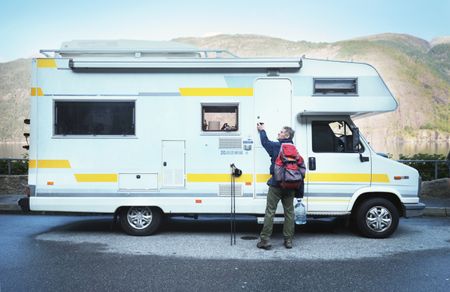 15 Reasons You'll Regret an RV in Retirement
15 Reasons You'll Regret an RV in RetirementMaking Your Money Last Here's why you might regret an RV in retirement. RV-savvy retirees talk about the downsides of spending retirement in a motorhome, travel trailer, fifth wheel or other recreational vehicle.
By Bob Niedt Published
-
 The Cheapest Places To Retire in the US
The Cheapest Places To Retire in the USWhen you're trying to balance a fixed income with an enjoyable retirement, cost of living is a crucial factor to consider.
By Stacy Rapacon Published
-
 Before Buying Your First Home, Get These Three Ducks in a Row
Before Buying Your First Home, Get These Three Ducks in a RowWith mortgage rates higher than we're used to, making sure you can comfortably afford to buy your first home is more important than ever.
By David W. Johnston, CFP® Published
-
 The Six Best Places to Retire in New England
The Six Best Places to Retire in New Englandplaces to live Thinking about a move to New England for retirement? Here are the best places to land for quality of life, affordability and other criteria.
By Stacy Rapacon Last updated
